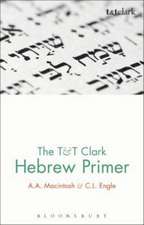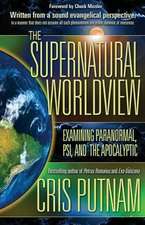Cutting Too Close for Comfort: Paul's Letter to the Galatians in its Anatolian Cultic Context: The Library of New Testament Studies
Autor Susan M. Elliotten Limba Engleză Paperback – 14 apr 2008
Din seria The Library of New Testament Studies
- 34%
 Preț: 509.52 lei
Preț: 509.52 lei - 22%
 Preț: 832.58 lei
Preț: 832.58 lei - 22%
 Preț: 832.09 lei
Preț: 832.09 lei - 24%
 Preț: 190.33 lei
Preț: 190.33 lei - 22%
 Preț: 832.65 lei
Preț: 832.65 lei - 23%
 Preț: 191.31 lei
Preț: 191.31 lei -
 Preț: 221.70 lei
Preț: 221.70 lei -
 Preț: 98.92 lei
Preț: 98.92 lei - 31%
 Preț: 830.87 lei
Preț: 830.87 lei - 22%
 Preț: 834.60 lei
Preț: 834.60 lei - 22%
 Preț: 831.59 lei
Preț: 831.59 lei - 30%
 Preț: 717.05 lei
Preț: 717.05 lei - 22%
 Preț: 835.03 lei
Preț: 835.03 lei - 30%
 Preț: 511.40 lei
Preț: 511.40 lei - 24%
 Preț: 190.33 lei
Preț: 190.33 lei -
 Preț: 158.77 lei
Preț: 158.77 lei - 30%
 Preț: 510.04 lei
Preț: 510.04 lei - 22%
 Preț: 832.99 lei
Preț: 832.99 lei - 30%
 Preț: 509.52 lei
Preț: 509.52 lei - 22%
 Preț: 832.80 lei
Preț: 832.80 lei - 22%
 Preț: 831.76 lei
Preț: 831.76 lei - 22%
 Preț: 834.93 lei
Preț: 834.93 lei - 22%
 Preț: 831.59 lei
Preț: 831.59 lei - 22%
 Preț: 832.41 lei
Preț: 832.41 lei - 22%
 Preț: 832.99 lei
Preț: 832.99 lei -
 Preț: 414.71 lei
Preț: 414.71 lei - 30%
 Preț: 773.65 lei
Preț: 773.65 lei - 22%
 Preț: 834.93 lei
Preț: 834.93 lei - 14%
 Preț: 511.81 lei
Preț: 511.81 lei -
 Preț: 222.16 lei
Preț: 222.16 lei - 30%
 Preț: 775.67 lei
Preț: 775.67 lei - 30%
 Preț: 1012.49 lei
Preț: 1012.49 lei - 30%
 Preț: 509.02 lei
Preț: 509.02 lei - 30%
 Preț: 656.90 lei
Preț: 656.90 lei -
 Preț: 469.92 lei
Preț: 469.92 lei -
 Preț: 471.68 lei
Preț: 471.68 lei -
 Preț: 173.21 lei
Preț: 173.21 lei - 30%
 Preț: 833.64 lei
Preț: 833.64 lei - 22%
 Preț: 834.93 lei
Preț: 834.93 lei - 31%
 Preț: 772.17 lei
Preț: 772.17 lei - 30%
 Preț: 774.20 lei
Preț: 774.20 lei - 14%
 Preț: 1124.92 lei
Preț: 1124.92 lei - 22%
 Preț: 948.51 lei
Preț: 948.51 lei - 14%
 Preț: 1128.84 lei
Preț: 1128.84 lei - 31%
 Preț: 1065.91 lei
Preț: 1065.91 lei - 22%
 Preț: 777.71 lei
Preț: 777.71 lei - 31%
 Preț: 1064.84 lei
Preț: 1064.84 lei - 22%
 Preț: 1063.44 lei
Preț: 1063.44 lei - 22%
 Preț: 889.49 lei
Preț: 889.49 lei - 22%
 Preț: 1006.06 lei
Preț: 1006.06 lei
Preț: 262.29 lei
Preț vechi: 333.68 lei
-21% Nou
Puncte Express: 393
Preț estimativ în valută:
50.19€ • 53.67$ • 41.85£
50.19€ • 53.67$ • 41.85£
Carte tipărită la comandă
Livrare economică 17 aprilie-01 mai
Preluare comenzi: 021 569.72.76
Specificații
ISBN-13: 9780567034359
ISBN-10: 0567034356
Pagini: 412
Dimensiuni: 156 x 234 x 25 mm
Greutate: 0.6 kg
Editura: Bloomsbury Publishing
Colecția T&T Clark
Seria The Library of New Testament Studies
Locul publicării:London, United Kingdom
ISBN-10: 0567034356
Pagini: 412
Dimensiuni: 156 x 234 x 25 mm
Greutate: 0.6 kg
Editura: Bloomsbury Publishing
Colecția T&T Clark
Seria The Library of New Testament Studies
Locul publicării:London, United Kingdom
Caracteristici
New in paperback edition of a well reviewed title
Cuprins
Introduction - Everyone But The Audience Part 1: Galatian Problems1. The Law as a Slave-Concubine Mountain2. The Law as an Enslaving Figure: Galatians 3.19-4.11Part 2: The Central Anatolian Religious Context3. A Divine Judicial System4. Our Mother, Our Place5. Attis and the Mother6. The Galli: The Mother's SlavesPart 3: Paul Persuades His Anatolian Audience to Oppose Circumcision7. The Rhetorical Situation Revisited: Circumcision and Castration8. Hagar, The Meter Sinaiene: Galatians 4.21-5.1 as a Triple Analogy9. The Two Ways and the Unity of Galatians10. Flesh and Spirit in Galatians 3.1-5Epilogue
Recenzii
'Commendable in its attempt to give proper attention to understanding the audience of a text by using region-specific epigrahical and archeological evidence.' - Philip A Harland, Phoenix, Vol XL No. 1-2
'When it comes to investigating the Anatolian context of Paul's audience in Galatia, this study is unparalleled. It is an important resource for classicists as well as students of the Bible.' Mark D. Nanos, Rockhurst University, Author of The Irony of Galatians and editor of The Galatians Debatev
'The premise of Elliott's work is so remarkably simple it is a wonder the book was not written long ago: Paul did not address his opponents in Galatia; he addressed the "the churches of Galatia" (1:2). Her study therefore emphasizes the former pagan cultic context of the recipients. While circumcision remains the central issue, Paul's concern over the issue "does not originate from an antipathy towards the Law but from an antipathy toward the cult of the Mother of the Gods and an abhorrence of self castration" (13). This rereading of Galatians produces radical results... Elliott's work is truly monumental. Acknowledging that 'a seminal study' is generally overused in book reviews, it is definitely apropos here.' Steven A. Hunt, Gordon College, MA, USA
'In this fascinating and timely monograph Susan Elliott seeks to understand Paul's letter to the Galatians, and in particular certain problematic metaphors and issues in the local context of Galatia. The sad fact is that, despite the amount of recent work devoted to this letter of Paul, such considerations of its specifically Gentile context have been lacking. Elliott's monograph should be seen as, one hopes, the first of several works trying to redress this imbalance. Her work is thorough, displaying an in-depth knowledge and familiarity not only with recent Pauline scholarship but also with classical scholarship and solid biblical exegesis of previous generations, spanning back well into the first few centuries after the one in which Paul wrote.' Review of Biblical Literature
'When it comes to investigating the Anatolian context of Paul's audience in Galatia, this study is unparalleled. It is an important resource for classicists as well as students of the Bible.' Mark D. Nanos, Rockhurst University, Author of The Irony of Galatians and editor of The Galatians Debatev
'The premise of Elliott's work is so remarkably simple it is a wonder the book was not written long ago: Paul did not address his opponents in Galatia; he addressed the "the churches of Galatia" (1:2). Her study therefore emphasizes the former pagan cultic context of the recipients. While circumcision remains the central issue, Paul's concern over the issue "does not originate from an antipathy towards the Law but from an antipathy toward the cult of the Mother of the Gods and an abhorrence of self castration" (13). This rereading of Galatians produces radical results... Elliott's work is truly monumental. Acknowledging that 'a seminal study' is generally overused in book reviews, it is definitely apropos here.' Steven A. Hunt, Gordon College, MA, USA
'In this fascinating and timely monograph Susan Elliott seeks to understand Paul's letter to the Galatians, and in particular certain problematic metaphors and issues in the local context of Galatia. The sad fact is that, despite the amount of recent work devoted to this letter of Paul, such considerations of its specifically Gentile context have been lacking. Elliott's monograph should be seen as, one hopes, the first of several works trying to redress this imbalance. Her work is thorough, displaying an in-depth knowledge and familiarity not only with recent Pauline scholarship but also with classical scholarship and solid biblical exegesis of previous generations, spanning back well into the first few centuries after the one in which Paul wrote.' Review of Biblical Literature












